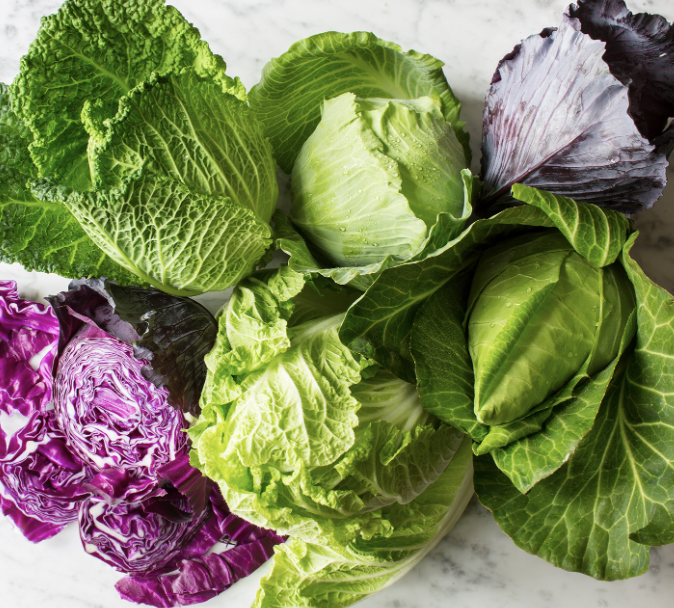Cabbage
What is it?
There are over 400 different varieties of cabbage throughout the world, which means it comes in all different shapes, sizes, and colors. Cabbage can be green, white, purple, or red and its leaves can be either wrinkled or smooth. Although cabbage typically resembles lettuce, it actually belongs to the Brassica genus of vegetables which also includes Brussel sprouts, radishes, and broccoli. It is highly nutritious and rich in vitamin C, fiber, and vitamin K, and research shows that it helps with digestion, improves heart health, and decreases inflammation.
What does it taste like?
The flavor or cabbage depends on the variety/color. Red cabbage tends to have a stronger peppery flavor to it, but develops a sweeter flavor when cooked. Green cabbage is similar, but has an overall milder flavor. Texture will also differ between varieties. Red cabbage is “rubbery” with a tougher texture to it when raw, but green and white cabbage leaves are more delicate and become very soft when cooked.
What to do with it?
Cabbage can be eaten raw, cooked, or pickled. It is often boiled, steamed, grilled, or roasted and can be incorporated into many different types of dishes. Keep in mind, there are some varieties of cabbage that may not hold up to prolonged exposure to heat, like Savoy or Napa cabbage. It can be as easy as using it as a base for a wrap, or simply chop it up and add it to a homemade soup, coleslaw, salad, or sauerkraut.
How to store it?
Cabbage is best stored whole and unrinsed. It keeps best in a cool, damp environment, so place a head of cabbage in a completely sealed plastic bag or fully covered in saran wrap, and store in the crisper drawer of your fridge. A head of cabbage can last up to two months when stored t



